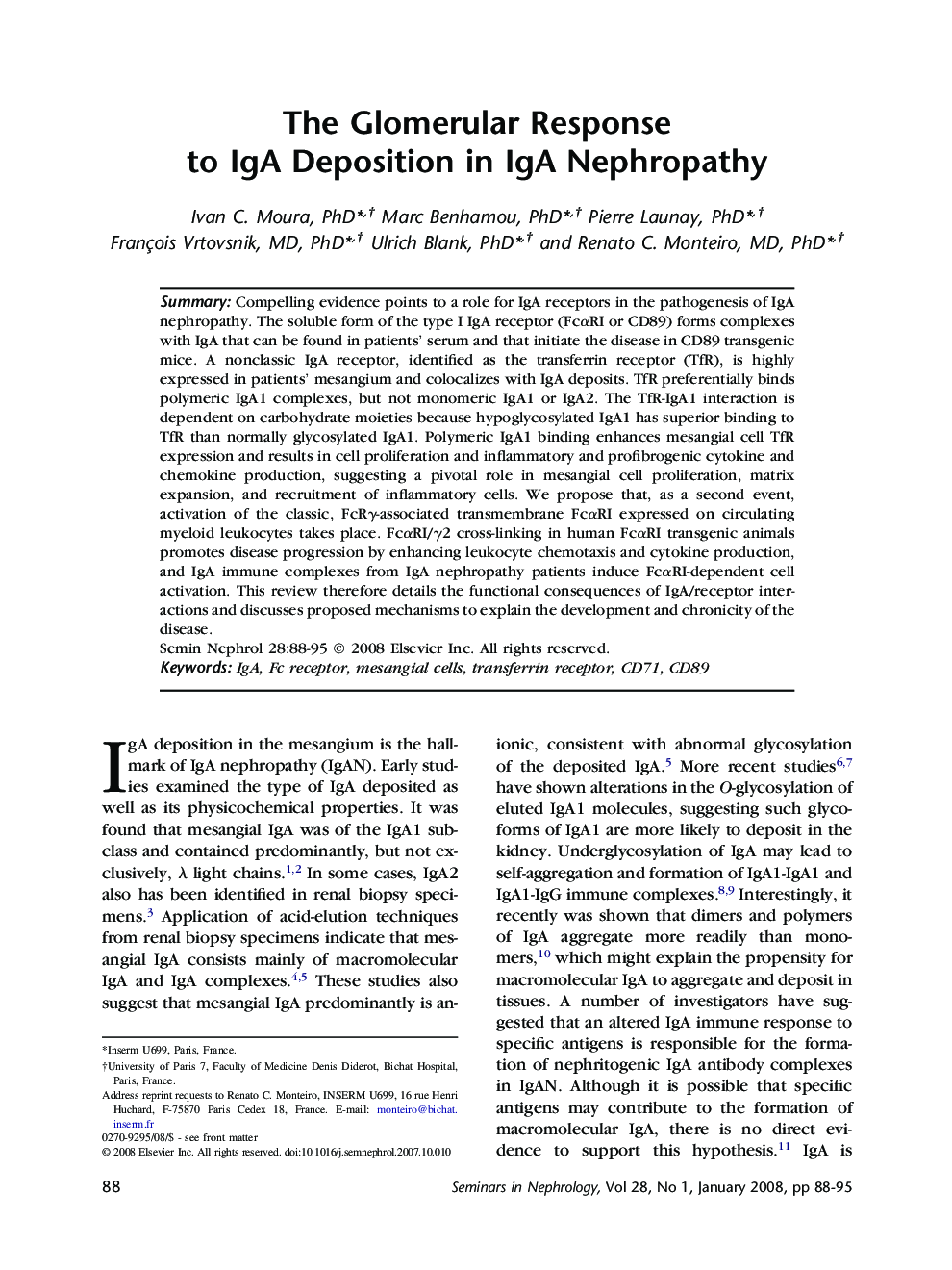| Article ID | Journal | Published Year | Pages | File Type |
|---|---|---|---|---|
| 3897298 | Seminars in Nephrology | 2008 | 8 Pages |
Abstract
Compelling evidence points to a role for IgA receptors in the pathogenesis of IgA nephropathy. The soluble form of the type I IgA receptor (FcαRI or CD89) forms complexes with IgA that can be found in patients' serum and that initiate the disease in CD89 transgenic mice. A nonclassic IgA receptor, identified as the transferrin receptor (TfR), is highly expressed in patients' mesangium and colocalizes with IgA deposits. TfR preferentially binds polymeric IgA1 complexes, but not monomeric IgA1 or IgA2. The TfR-IgA1 interaction is dependent on carbohydrate moieties because hypoglycosylated IgA1 has superior binding to TfR than normally glycosylated IgA1. Polymeric IgA1 binding enhances mesangial cell TfR expression and results in cell proliferation and inflammatory and profibrogenic cytokine and chemokine production, suggesting a pivotal role in mesangial cell proliferation, matrix expansion, and recruitment of inflammatory cells. We propose that, as a second event, activation of the classic, FcRγ-associated transmembrane FcαRI expressed on circulating myeloid leukocytes takes place. FcαRI/γ2 cross-linking in human FcαRI transgenic animals promotes disease progression by enhancing leukocyte chemotaxis and cytokine production, and IgA immune complexes from IgA nephropathy patients induce FcαRI-dependent cell activation. This review therefore details the functional consequences of IgA/receptor interactions and discusses proposed mechanisms to explain the development and chronicity of the disease.
Related Topics
Health Sciences
Medicine and Dentistry
Nephrology
Authors
Ivan C. PhD, Marc PhD, Pierre PhD, François MD, PhD, Ulrich PhD, Renato C. MD, PhD,
